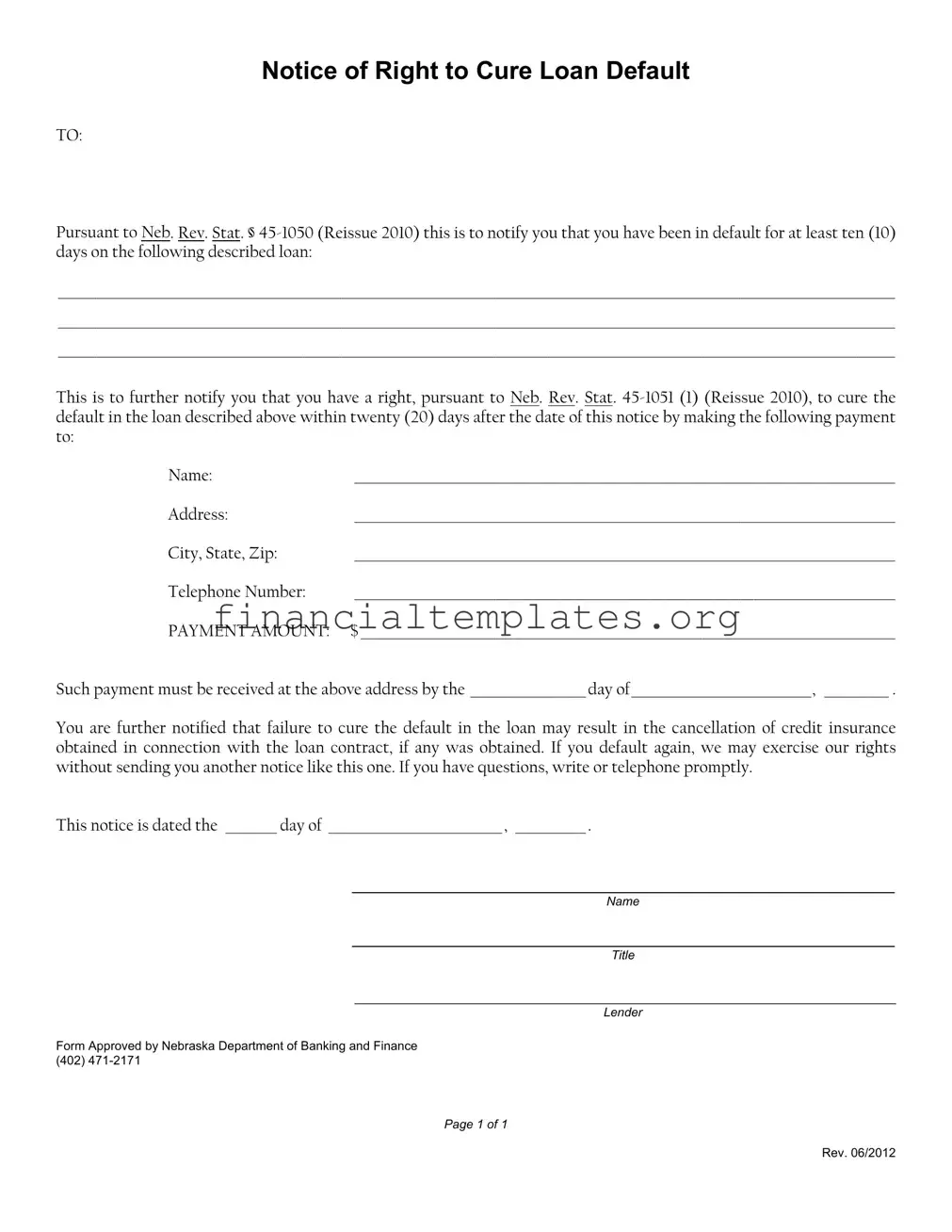Notice of Right to Cure Loan Default
TO:
Pursuant to Neb. Rev. Stat. § 45-1050 (Reissue 2010) this is to notify you that you have been in default for at least ten (10) days on the following described loan:
__________________________________________________________________________________________________________________________________
__________________________________________________________________________________________________________________________________
__________________________________________________________________________________________________________________________________
This is to further notify you that you have a right, pursuant to Neb. Rev. Stat. 45-1051 (1) (Reissue 2010), to cure the default in the loan described above within twenty (20) days after the date of this notice by making the following payment to:
Name: |
____________________________________________________________________________________ |
Address: |
____________________________________________________________________________________ |
City, State, Zip: |
____________________________________________________________________________________ |
Telephone Number: |
____________________________________________________________________________________ |
PAYMENT AMOUNT: |
$ ___________________________________________________________________________________ |
Such payment must be received at the above address by the __________________ day of____________________________, __________ .
You are further notified that failure to cure the default in the loan may result in the cancellation of credit insurance obtained in connection with the loan contract, if any was obtained. If you default again, we may exercise our rights without sending you another notice like this one. If you have questions, write or telephone promptly.
This notice is dated the ________ day of ___________________________, ___________ .
_________________________________________________________
Name
_________________________________________________________
Title
__________________________________________________________
Lender
Form Approved by Nebraska Department of Banking and Finance (402) 471-2171
Page 1 of 1
Rev. 06/2012
